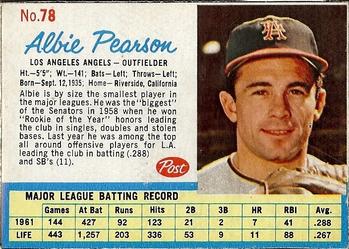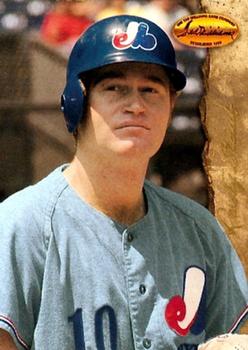 |
| (image from Lamar) |
Wouldn't it be nice if this whole episode could be wrapped up in a "Forensic Files" TV show on HLN someday. We need a happy ending first. The Wetterling case just drifts and drifts. The recent flurry of attention on the case appears all smoke, no fire, doesn't it? We have this rather disgusting person named a "person of interest" (POI). Blogger Joy gained fame by pointing out that maybe law enforcement hadn't been "connecting the dots" well enough. I suppose they hadn't. But we're still left with a total circumstantial case regarding this new POI.
A previous flurry of attention on the case happened after a John Walsh TV special on CNN. I wrote a post shortly after that, suggesting that the case had essentially been solved, that Blogger Joy helped everyone turn the corner. I had expected that show to be a rehash of everything we already knew about the case. My eyes were opened as the show used Blogger Joy as the focus for lots of stuff that seemed revelatory. Seemed revelatory!
Time and again we are led on by information that begs to be treated as revelatory. And then we get frustrated by the main law enforcement spokesman, who keeps reminding us that the "bar is set high" for them. We're frustrated because the entertainment industry and Blogger Joy seem to be screaming at us that the corner has been turned. Who could have looked at the recent sensational headlines and not thought: What a relief!
This case continues to toy with our thoughts. In the wake of the supposedly revelatory Walsh special, we began to think: wait a minute, it's not over. And then it was ditto with the explosion of newspaper headlines having to do with this creepy POI person. We realized a void once again. Maybe we should come up with a term for this kind of disappointment.
The recent media coverage included statements that a "break" had been achieved in the Wetterling case. We surmise that the corner has in fact been turned, that we "more or less" know who did it now. But hey, we don't. Do I actually think this new POI did it? I am less than convinced. What would have brought him out to that remote place to commit his act? How could he have known those boys would come along at a certain time?
Regardless of how the Wetterling case turns out - and it may never progress from where it is now, folks - it is a fact that the lives of some innocent people will have been disrupted, perhaps catastrophically so. There is one individual, a trumpet-playing whiz who teaches, whose life has been disturbed. I remember him from when I played in the St. Cloud State University band in the mid-1970s. I didn't really know him, although we would have nodded "hello" to each other if encountering each other on the campus mall. I was familiar enough with him to see he was, shall we say, mildly eccentric. Emphasis on mildly. Maybe that's how he got into a hole in the Wetterling investigation.
Shortly after my blog post about the Walsh special, I was contacted by one of the people writing a book about the whole thing: Rob Ebben. He wondered why I was so enthusiastic about the purported conclusion of that TV show and Joy and Blogger. Walsh wouldn't have done the show if he couldn't have at least suggested there was some dramatic new development or nugget of info. Did I react in a naïve way? Me, naïve? I suppose I did.
Ebben wondered why I would be so quick to suggest that the Walsh special had come along, in effect, with his cape on and essentially solved the case. Oh, Joy the Blogger had a cape on too. She was the fodder for Walsh. Ebben, a nice guy, hit me over the head and made me realize we were basically back to where we were before.
I responded to Ebben. I encouraged him to consider in his writing all the "collateral damage" done in the Wetterling case, the disrupted lives of people who have been the focus for some suspicion, the people who have been called more than once to answer questions. My trumpet-playing friend would be at the top of that list. (I'm assuming he's innocent, but hey, we still don't know who did it.)
I approached Mr. Ebben this way: I asked him to consider the following: In every neighborhood in America, there are people who have a checkered background or live an atypical lifestyle. No matter where the Wetterling abduction happened, there would be certain people in close proximity who would come to your attention because of their lifestyle, past problems or current status in life. Call it a "dirty little secret" of America. "The majority of men lead lives of quiet desperation," as it were.
So, my trumpet-playing friend has had some minor issues that make him seem a little, well, against the grain. None of this would suggest to me that he ought to be considered a real suspect. Hell, I told Ebben that I might have trouble remembering what I had for supper last night, seriously.
How many of us could handle being in the Klieg lights of an investigation like this? I thank the Lord that nothing like the Wetterling abduction happened in my neighborhood. Think about it.
Law enforcement must be careful not to tarnish the lives of people who in all likelihood are innocent. Suspicion in a case like this can be deadly because just think of the kind of crime we're talking about. It is the most heinous crime imaginable. Just think of what the perpetrator has wrought. Worst of all it's the death of a child, but beyond that it's the untold thousands of hours of investigative work, the cost and the distraction. These resources are limited.
Law enforcement must be careful not to tarnish the lives of people who in all likelihood are innocent. Suspicion in a case like this can be deadly because just think of the kind of crime we're talking about. It is the most heinous crime imaginable. Just think of what the perpetrator has wrought. Worst of all it's the death of a child, but beyond that it's the untold thousands of hours of investigative work, the cost and the distraction. These resources are limited.
I so admire the investigative people who show up on that "Forensic Files" TV show on HLN. They come across as so dedicated and heroic. One other takeaway from that show: it makes you wonder if life insurance should be outlawed. The motive in so many murders is someone's desire to collect on a life insurance policy. What an ugly underside of American life. I'm glad there is no life insurance policy on me, so there's no target on my forehead. Apparently an appreciable number of people have no problem with their conscience planning a murder with the idea of collecting life insurance.
I would love seeing an episode of Forensic Files someday, reviewing the resolution of the Jacob Wetterling case. Right now I'm not betting on ever seeing such a show. A Star Tribune article said that "minus a confession," we'll never know. Silly rabbit, a confession wouldn't prove anything either, and that's because "false confessions" from troubled souls are common. Ask anyone in law enforcement.
If the perpetrator can be induced to say where the body was put, and investigators can then confirm it's Jacob, that's the only way we'll ever know. If the new POI is in fact guilty, there will have to be ways to induce him to talk, I suppose by promising a gentler prison environment than would otherwise be the case. But what if he is innocent of this crime? What if he's just another sexual deviant creep? Answers, answers, answers. We just need answers.
And after all the sound and fury developed from Joy's blog, where, really has this taken us? We could all go to our grave not knowing the answer.
- Brian Williams - morris mn Minnesota - bwilly73@yahoo.com











